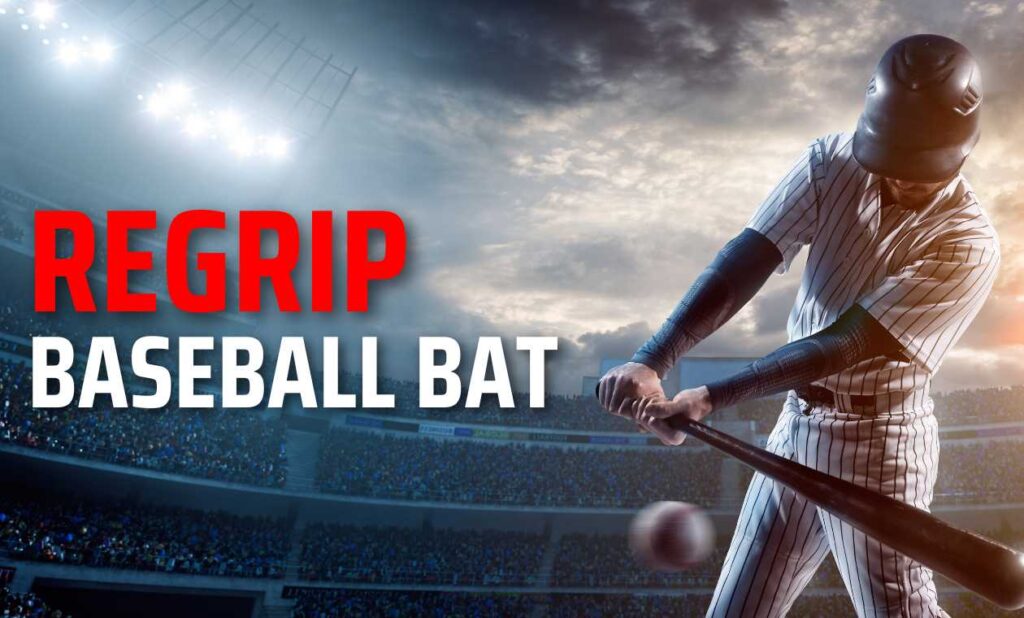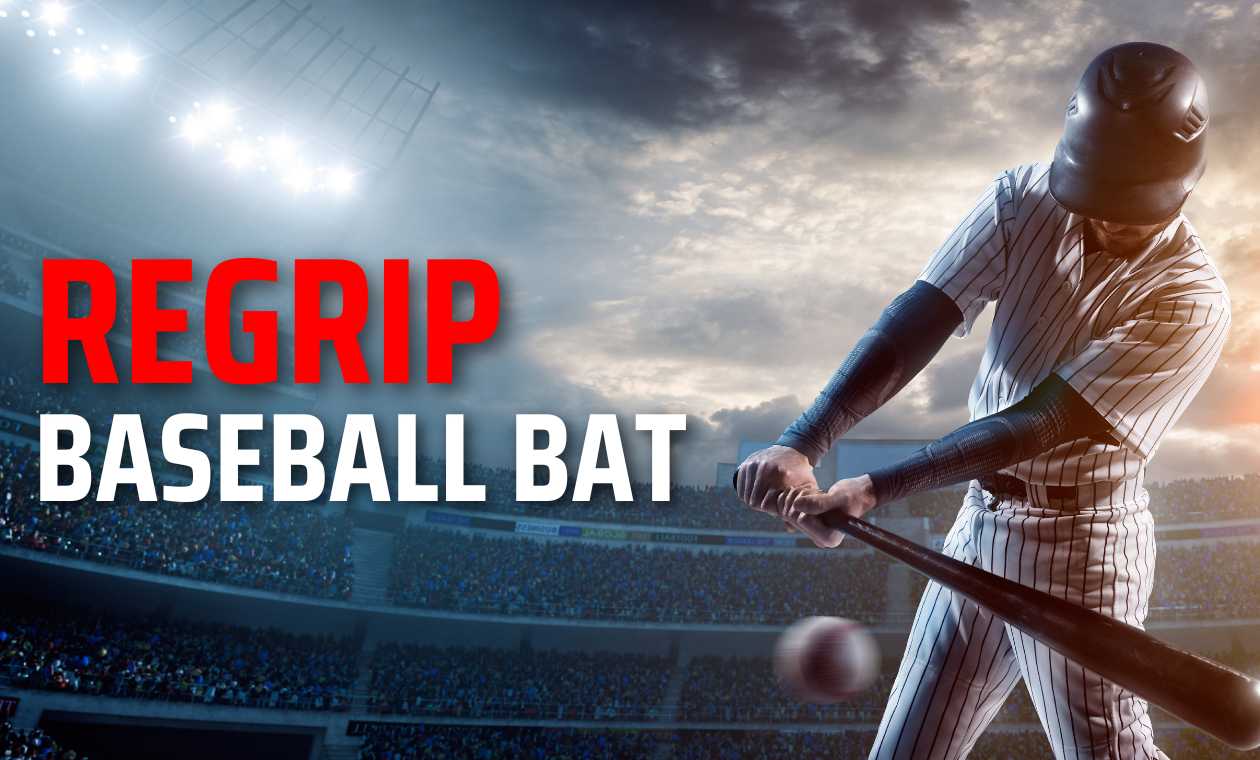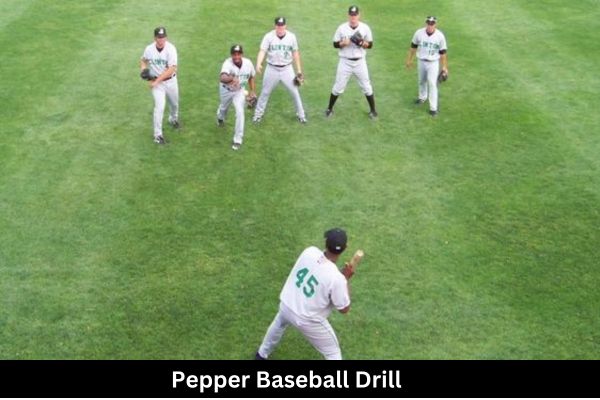
A well-gripped baseball bat is essential for any player looking to optimize their performance on the field. The grip plays a crucial role in providing control, comfort, and stability during swings, ultimately influencing the accuracy and power of the hit.
In this guide, we delve into the art of regripping a baseball bat to enhance its performance. Whether you’re a seasoned player or just starting out, understanding how to properly regrip your bat can make a significant difference in your game. So, let’s explore the step-by-step process of regripping and unlock the potential for improved performance on the baseball diamond.
Also Read: Baseball Runline Betting Guide
Understanding Grip Thickness and Hand Size
When it comes to regripping your baseball bat, considering grip thickness and hand size is crucial for achieving optimal comfort and control.
- For players with smaller hands (youth and some adults), opting for grips with a thickness of 0.5mm or 1.1mm can provide better control without sacrificing the feel of the bat.
- Those with average-sized hands (most adults) may find that grips ranging from 1.1mm to 1.8mm strike a comfortable balance between control and cushioning.
- Players with larger hands may benefit from thicker grips, such as those measuring 1.8mm or more, as they offer increased grip surface for better control and power transfer during swings.
- Smaller Hands: Consider grips in the 0.5mm to 1.1mm range for improved control without compromising comfort.
- Average Hands: Opt for grips ranging from 1.1mm to 1.8mm to strike a balance between control and cushioning.
- Larger Hands: Choose thicker grips measuring 1.8mm or more to maximize grip surface and enhance control and power transfer.
By selecting the appropriate grip thickness based on your hand size, you can ensure a comfortable and secure grip on your baseball bat, ultimately enhancing your performance on the field.
Choosing the Right Grip for Your Swing Style
Power Hitters: Power hitters can benefit from thicker grips, preferably 1.8mm or more, with added tackiness. These grips enhance power transfer during swings and provide better bat control, allowing power hitters to generate maximum force behind each hit.
Contact Hitters: For contact hitters focused on precision and control, thinner grips ranging from 0.5mm to 1.1mm are ideal. These grips offer enhanced bat feel and control, enabling contact hitters to make consistent and accurate hits.
Speedsters: Speedsters, such as those focused on base stealing or executing bunts, may prefer textured grips for extra grip and bat control. Textured grips provide added traction, especially in sweaty conditions, allowing speedsters to maintain control of the bat during fast-paced plays.
Your grip directly affects your performance on the field, influencing factors such as bat control, power transfer, and swing mechanics.
Choosing the right grip for your swing style can significantly impact your ability to make solid contact with the ball and achieve optimal results during gameplay.
By selecting a grip that complements your swing style, you can enhance your overall performance and gain a competitive edge on the baseball diamond.
Selecting the appropriate grip tailored to your swing style is essential for maximizing your performance and achieving success on the field.
Also Read: SB in Baseball Strategies
Special Considerations for Left-Handed Batters
Left-handed batters require a reversed wrapping technique when regripping their baseball bat.
Unlike right-handed batters who start at the bottom of the handle and wrap upwards, left-handed batters should begin at the top of the handle and wrap downwards towards the knob.
It’s crucial for left-handed batters to ensure proper alignment of the grip during regripping.
The tapered end of the grip should align correctly with the shape of the knob for a smooth transition and comfortable grip.
By following these specialized techniques, left-handed batters can effectively regrip their baseball bats and ensure optimal comfort and control during gameplay.
Removing Stubborn Grip Adhesive
Heat Method: Use a hairdryer on low heat to soften the adhesive, making it easier to peel off the old grip. Apply heat evenly to the grip area and gradually peel off the adhesive as it loosens.
Adhesive Remover: Apply a citrus-based adhesive remover according to the product instructions. Gently rub the remover onto the grip adhesive, allowing it to penetrate and break down the adhesive for easier removal.
Fishing Line Technique: Slide a thin fishing line under the grip and gently saw back and forth to detach the adhesive from the bat handle. This method helps loosen stubborn adhesive without damaging the bat surface.
Handle with Care: Exercise caution when removing the old grip to avoid damaging the bat surface or handle.
Avoid Using Sharp Tools: Refrain from using sharp tools that may scratch or gouge the bat handle while removing the adhesive.
Work Slowly and Patiently: Take your time when removing the old grip adhesive to ensure a careful and thorough process. Rushing may result in accidental damage to the bat.
By following these methods and precautions, you can effectively remove stubborn grip adhesive from your baseball bat without causing damage to the bat handle.
Troubleshooting Regripping Issues
Air Bubbles: Air bubbles may form during the regripping process, affecting the grip’s smoothness and comfort.
Wrinkles: Wrinkles in the grip can compromise its integrity and lead to discomfort or uneven grip.
Loose Grips: Improper tension or overlapping during wrapping can result in a loose grip that affects bat control and feel.
Solutions and Tips
- Air Bubbles: Use a credit card or similar object to gently smooth out trapped air while wrapping the grip. Start from the center and work towards the edges to eliminate bubbles effectively.
- Wrinkles: Ensure proper tension and alignment while wrapping the grip to prevent wrinkles. If wrinkles occur, carefully unwrap the grip and reapply, paying attention to maintaining even tension throughout.
- Loose Grips: Start with a firm grip on the handle and maintain consistent tension while wrapping to prevent a loose grip. Overlapping each turn slightly and securing the end tightly with electrical tape can help maintain grip tension.
By addressing these common regripping issues with the provided solutions and tips, you can achieve a smooth, secure grip on your baseball bat for optimal performance on the field.
Exploring Alternatives to Traditional Grips
Lizard Skins: Lizard Skins grips offer ultra-thin, tacky, and durable options for players seeking enhanced grip performance. These grips come in various thicknesses and textures, providing customization options to suit individual preferences.
Tape Grips: Tape grips offer a customizable solution for players looking to adjust grip thickness and feel. With options ranging from cloth tape to synthetic options, players can experiment with different tape types to find their ideal grip.
Cork Grips: Natural cork grips provide excellent feel and moisture absorption, making them a popular choice for some players. However, cork grips may wear faster than synthetic options and require more frequent regripping.
Lizard Skins:
- Pros: Ultra-thin design, tackiness, durability, customization options.
- Cons: Higher cost, specific cleaning requirements.
Tape Grips:
- Pros: Customizable thickness and feel, affordable.
- Cons: Requires regular replacement, potential for unraveling.
Cork Grips:
- Pros: Excellent feel, moisture absorption.
- Cons: Less durable, may require more frequent regripping.
By exploring these alternative grip options and considering their respective pros and cons, players can find the grip solution that best suits their preferences and playing style.
Tuning Thickness for Peak Performance
Fine-tuning the thickness of your grip can significantly impact bat feel and performance on the field.
Consider tapered grips, which offer thicker sections for power transfer and thinner areas for enhanced control.
By experimenting with micro-adjustments in grip thickness, players can achieve a customized feel that maximizes their performance at the plate.
Layering grips is another method for adjusting thickness and optimizing performance.
Players can experiment with adding a thin undergrip beneath their regular grip to provide additional cushioning and control.
By exploring different thickness combinations and experimenting with grip layering, players can find the perfect balance of comfort and performance tailored to their individual preferences.
Also Read: Why Are Umpires Called Blue?
Boosting Traction for Control
Textured grips feature raised patterns or stippling that enhance grip traction, particularly in sweaty or humid conditions.
Perforated grips incorporate tiny holes that help wick away moisture, providing improved grip in humid environments.
Both textured and perforated grip options offer enhanced traction and control, allowing players to maintain a secure grip on the bat during swings.
Grip enhancers, such as sprays or powders, can temporarily increase tackiness and grip traction.
While grip enhancers provide a quick fix for improving grip tackiness, their effects are temporary and may require reapplication during gameplay.
Players should use grip enhancers judiciously, as excessive application can lead to sticky residue buildup and affect the feel of the grip over time.
Weighting for a Balanced Swing
Lead Tape: Small strips of lead tape can be applied under the grip, towards the knob of the bat, to increase its weight and achieve a balanced swing.
Weighted Grips: Pre-weighted grips are available, offering controlled weight distribution along the handle of the bat. These grips allow players to adjust the bat’s weight without altering its overall balance significantly.
Start Small: When adding weight to the bat, begin with small increments to avoid drastically altering swing mechanics.
Test Thoroughly: Before using a weighted bat in gameplay, conduct thorough testing during practice sessions to gauge its impact on swing speed, timing, and comfort.
Prioritize Balanced Weight Distribution: Ensure that any additional weight added to the bat maintains a balanced distribution, avoiding excessive weight in one area that may negatively affect swing mechanics.
By implementing these techniques and considerations, players can fine-tune the weight of their baseball bat to achieve a balanced swing and optimize their performance at the plate.
Extending Grip Life
Tips for Cleaning and Maintaining Bat Grips
- Regularly clean bat grips using mild soap and water to remove dirt, sweat, and grime buildup.
- Gently scrub the grip surface with a soft brush or cloth, paying attention to any areas of heavy soiling.
- Avoid using harsh chemicals or abrasive cleaners, as they may damage the grip material and reduce its lifespan.
- Allow the grip to air dry completely before storing or using the bat to prevent moisture buildup and potential mold growth.
Proper Storage Techniques
- Store your baseball bat in a cool, dry place away from direct sunlight to prevent grip drying and cracking.
- Avoid storing the bat in excessively hot or humid environments, as this can accelerate grip deterioration.
- Consider using grip guards or protective covers to shield the grip from abrasion and wear when not in use.
- Inspect the grip periodically for any signs of damage or wear, and address any issues promptly to prolong its lifespan.
By following these cleaning and storage tips, players can effectively maintain their bat grips and prolong their lifespan, ensuring optimal performance on the field.
Recycling Old Grips
Check with local recycling programs or sporting goods stores to inquire about recycling options for old bat grips.
Some recycling facilities may accept synthetic materials like bat grips for responsible disposal or recycling.
Explore online resources or forums dedicated to baseball equipment recycling to connect with organizations or individuals who may accept old bat grips for recycling purposes.
Repurpose old bat grips for crafting projects such as coasters, phone grips, or tool handles.
Use old bat grips as padding or cushioning material for DIY projects around the house or workshop.
Donate old bat grips to schools, youth leagues, or community organizations that may be able to use them for equipment repairs or creative projects.
By exploring recycling options and repurposing ideas for old bat grips, players can minimize waste and contribute to environmentally sustainable practices within the baseball community.
In Crux
A properly regripped baseball bat is essential for achieving optimal performance on the field. By ensuring a secure and comfortable grip, players can enhance their control, power transfer, and overall performance during gameplay. Players are encouraged to experiment with different grip options and thicknesses to find what works best for their individual preferences and playing style. With a wide range of grip choices available, players have the opportunity to customize their bat grip to suit their unique needs and maximize their potential on the baseball diamond.
In conclusion, investing time and effort into regripping your baseball bat can lead to significant improvements in your performance and enjoyment of the game. So, don’t hesitate to explore different grip options and find the perfect fit for your game.

Meet Daniel Anderson, the heart and soul behind Baseball Pro Picks. At 49, Daniel’s life has revolved around baseball, a passion that’s as strong today as it was when he first fell in love with the game. Living in the USA, Daniel has dedicated countless hours to watching, analyzing, and understanding every pitch, hit, and home run, making almost no game missed. His deep-rooted love for the sport is matched only by his commitment to sharing insightful, expert analysis with fellow baseball enthusiasts. With decades of experience and a keen eye for the game’s nuances, Daniel brings a unique perspective that enriches Baseball Pro Picks. Trust Daniel to guide you through the intricacies of baseball with the authority and trustworthiness of a true aficionado.


